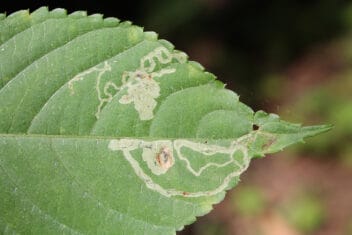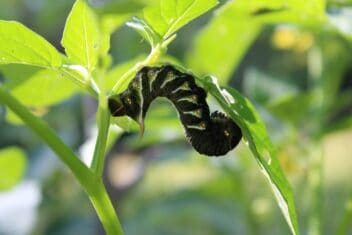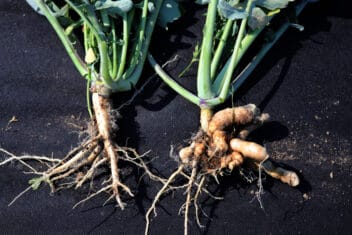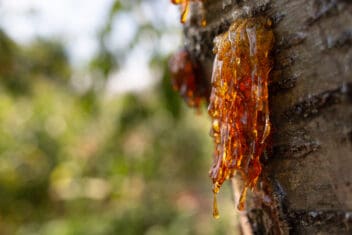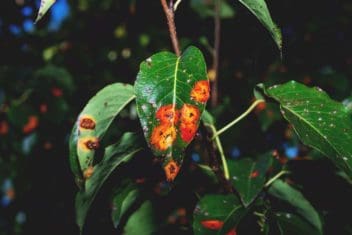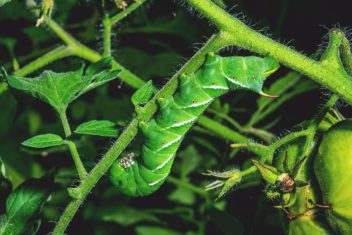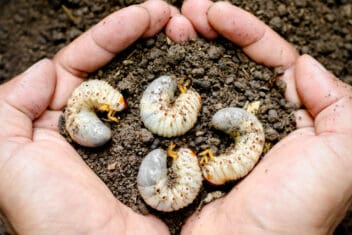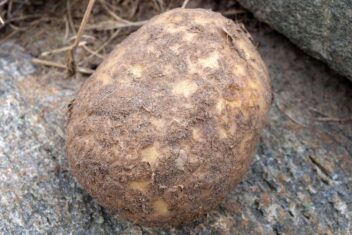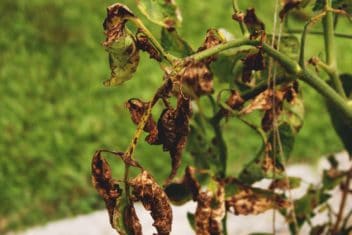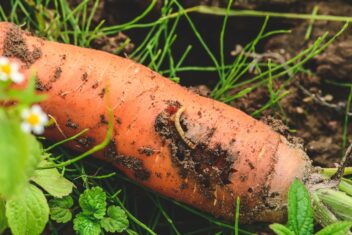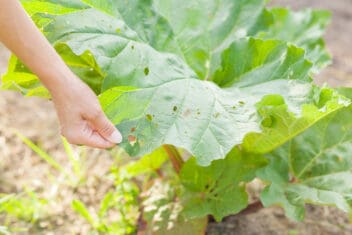If there is a fruit more synonymous with summer than peaches, I’d love to know what it is. There is no comparison to biting into a sun-warmed peach picked off the tree just before eating. But you might be denied that sweet treat if your peach tree suffers from problems like lack of fruit or diseases.
Home-grown peaches taste completely different from store-bought. They’re sweeter and have a more intense depth of flavor.
Homegrown peaches are worth the effort, but sometimes things can go wrong. Often those things are easy to avoid, so we’re going to look at what you can do to maximize your chances of growing wonderful, juicy peaches.
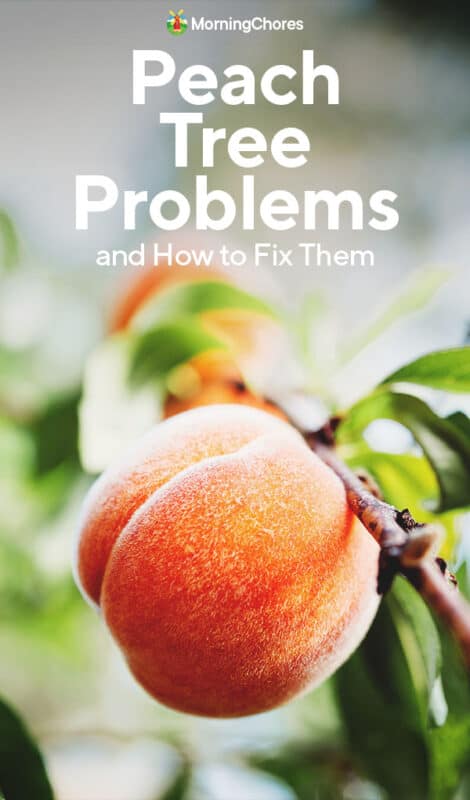
Problems That Can Ruin Your Peach Crop
Some seasons everything can go wrong with fruit trees, and peaches are no different. You may face zero problems, or some years, you could be forgiven thinking nothing is going right.
This guide will help you work out the issues causing your peach harvest problems.
1. Small Fruits
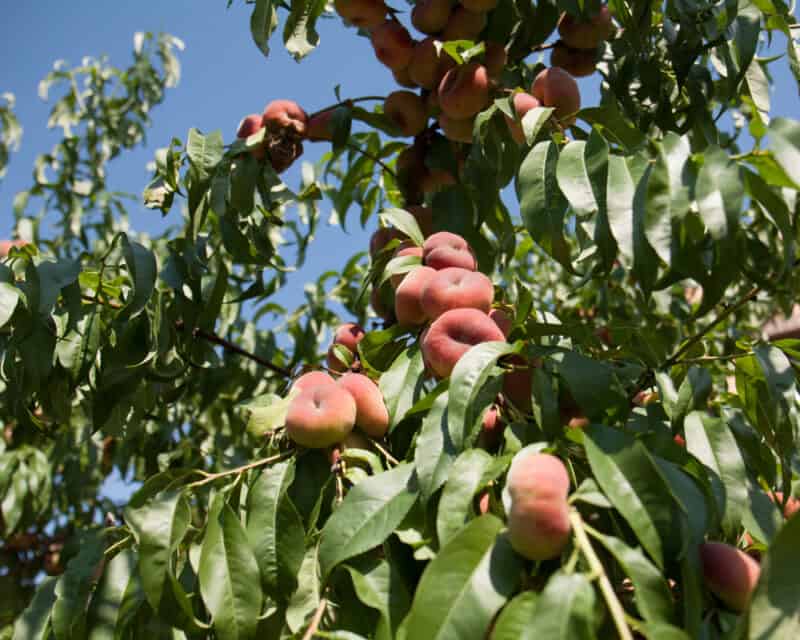
You may find some peaches on the tree grow to normal size, but the majority never get bigger than a golf ball. This is usually due to the winter being too warm.
Peaches need sufficient chill time between 32-50ºF to develop fruit properly. A warm winter affects the peach tree’s ability to form the flower properly.
Specific chill time hours differ, but standard peach trees need between 450 to 1200 hours, depending on the cultivar. Others can get by with fewer.
Obviously, if you have a peach tree in an area where the winters are too warm, you can’t change that. Talk to a local expert to find out the peach tree variety that grows in your specific area.
Peach varieties that need the least amount of chill time under 100 hours include:
- Gulf Queen
- Ventura
- Mid Pride
Peach varieties that need chill time of up to 150 hours include:
- May Pride
- August Pride
- Eva’s Pride
Another problem that can happen when peach trees don’t get the chill time they need stunted leaf growth.
A peach tree goes dormant in winter. They produce a growth-inhibiting hormone that stops them from growing new leaves and flowers until spring. The cold winter temperature slowly breaks the hormone down allowing the tree to break dormancy when spring arrives. If the tree isn’t out of its dormancy, it doesn’t grow new leaves, shoots, and buds.
This is another reason you should talk to a local expert before planting a peach tree. See what variety suits your area.
2. Healthy Foliage With No Fruit
If you use a fertilizer that contains too much nitrogen, the peach tree will produce lots of new growth and foliage, but no fruit.
If you regularly fertilize your lawn around the peach tree, you may be inadvertently providing excessive amounts of nitrogen to the peach tree. This would be the same if you use a fertilizer that isn’t specific to fruit trees, so be aware of what the NPK levels are.
Use a balanced fertilizer with equal amounts of nitrogen, phosphorus, and potassium like a 10-10-10 fertilizer.
3. No Fruit After Pruning
Some plants will take any amount of pruning and still bounce back and produce foliage, flowers, and fruit. Peach trees are a little fussy when it comes to pruning.
If you prune your peach tree by cutting back parts of branches, you are encouraging new growth, not fruit.
At pruning time, prune for fruit production by cutting whole branches. Heading back, or cutting part branches is for shape, not for fruit production.
4. Damaged Buds and No Fruit
Although peach trees need sufficient chilling time, a sudden drop in temperature can damage buds and prevent fruiting. Buds used for fruiting formed in the previous year.
This means that when winter comes calling, a sudden drop in temperature may damage those buds, therefore affecting fruiting.
Both warm winters and sudden frosts will damage the buds on peach trees.
5. Cankers or Gummy Wounds
This is a common one of the many peach problems and takes a little effort to sort out. Brown rot is a fungus that comes around bloom time. It starts with cankers or wounds that appear gummy. Over a short period of time, it infects the developing fruit and other plant tissue.
A little brown spot appears on the skin of the fruit. This expands and then the fruit shrivels up into a mummy.
To break this fungal cycle, remove all mummified fruit and burn them or dispose of them. Make sure if they drop off, you pick them up. If they remain on the tree well after the season ends, remove them from the tree.
Use a fungicide to treat for the next season.
6. Curled, Puckered Leaves
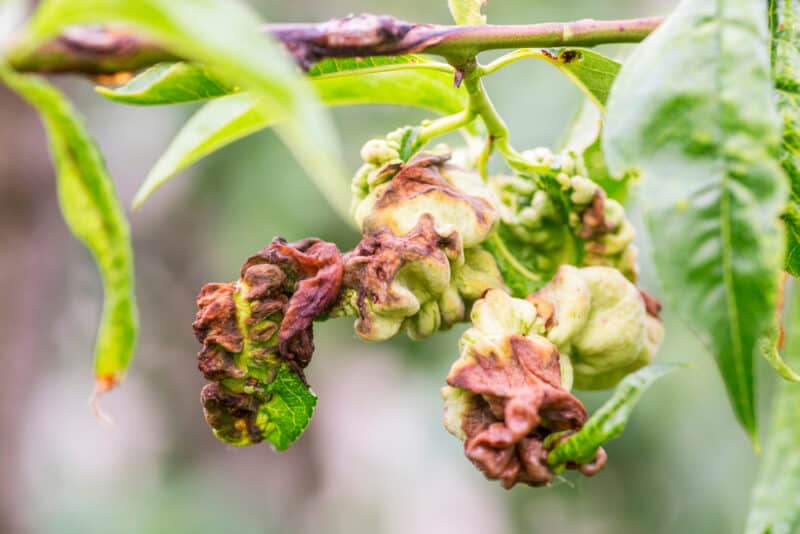
Apart from brown rot, leaf curl is one of the most common problems. This disease starts in spring, and if you see it repeating itself each year, you’ll learn to recognize it.
The leaves become thick and puckered. They often turn red for a while before turning yellow and falling off the tree. Your peach harvest will be much lower than it should with leaf curl.
Use a copper-based fungicide or lime sulfur to treat the problem.
7. Purple or Red Spots
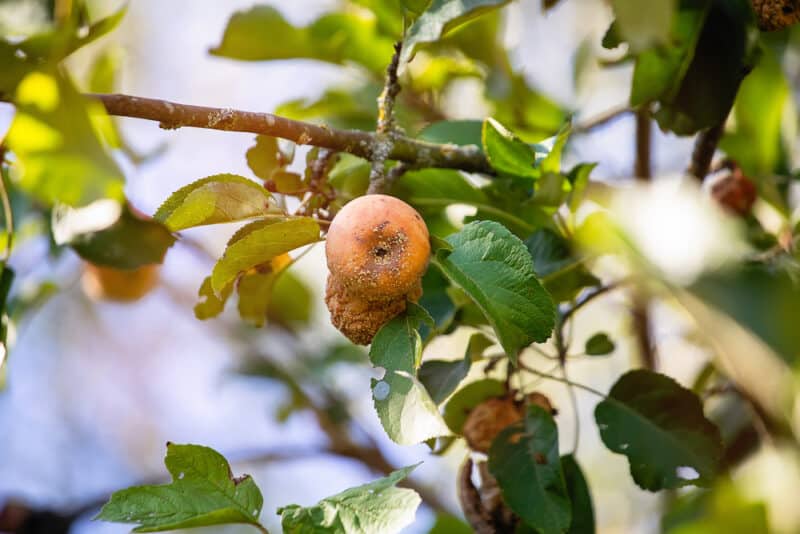
Bacterial spot is a disease that affects both leaves and fruit. It’s caused by the bacteria Xanthomonas campestris pv. pruni. Purple or red spots with white centers form, often leaving a pitted surface.
Some fruit forms deep cracks in the flesh. You should be able to eat the fruit, but it may require cutting the worst of the disease away.
Make sure you clean all tools before pruning. Some varieties are resistant to bacterial spot. These include:
- Southern Pearl
- Norman
- Winblo
- Candor
8. Fuzzy, Small Dark Spots
Peach scab, caused by the fungus Cladosporium carpophilum, results in small fuzzy dark spots forming on the maturing fruit. It’s likely the spots will spread and may join together. The surface of the fruit sometimes develops cracks and the leaves and twigs can also be affected.
Humid conditions in spring and summer contribute to the start of peach scab. Humidity and temperatures around 65-75ºF are perfect for the fungus that overwinters on twigs infected the season before.
Make sure your peach tree isn’t too shaded and has plenty of airflow to avoid problems like this. Give the tree a hard prune and treat it with a fungicide. Remove and dispose of any infected fruit or parts of the tree.
The good news is you can still enjoy peaches affected by scab. Simply peel before you eat or process.
9. New Leaves are Yellow
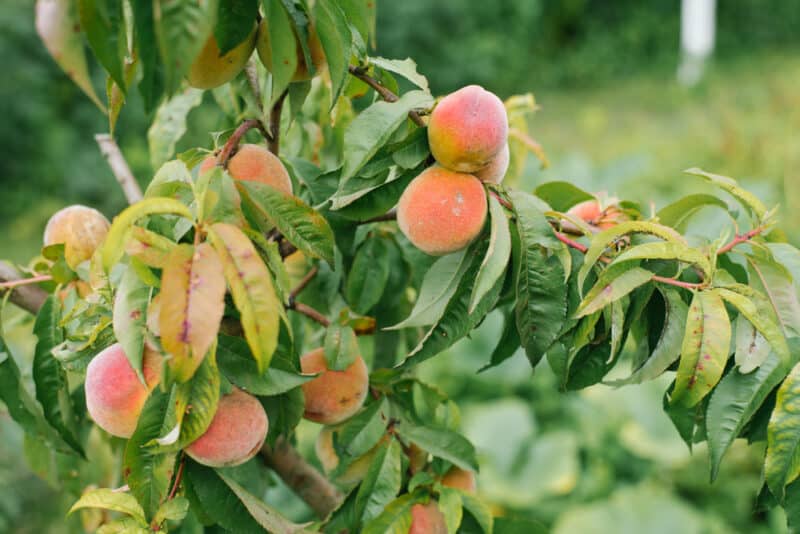
Of all the peach problems, peach yellows is the one we really don’t want to find. Caused by a phytoplasma, the leaves emerge yellow and misshapen.
Over a couple of seasons, this disease worsens and the fruit becomes small and bitter. The tree loses vigor and gets worse over time.
Unfortunately, the best remedy is to cull the tree from your property. It’s spread by plum leafhoppers (Macropsis trimaculata), so do your best to prevent these insects from visiting to prevent future outbreaks.
10. Blisters on the Bark
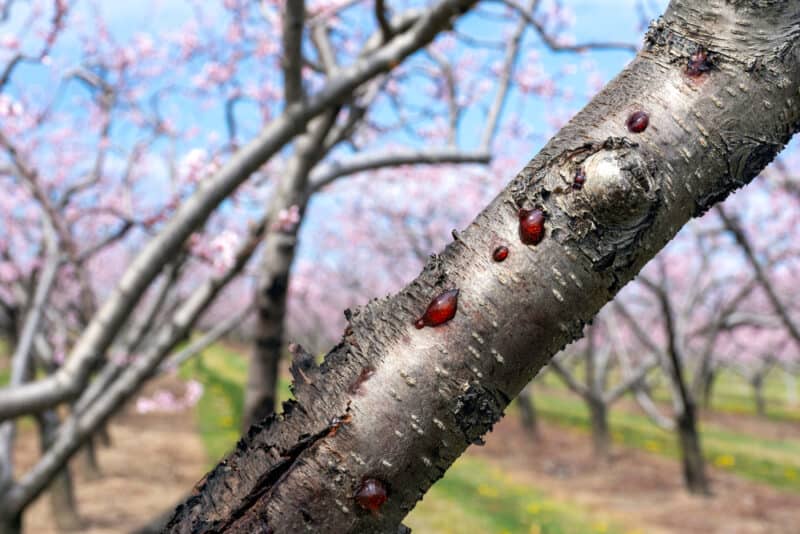
Another fungus infection, gummosis is caused by Botryosphaeria dothidea. Vigorous trees are normally infected with blisters on the bark. Infection takes a while and is usually seen the following spring after the spring or fall they are infected.
Cankers form on the trunk and branches, often causing large gum deposits. The bark will eventually become rough and scaly.
The tree vigor and overall health deteriorates, as does the fruit quality.
The best way to avoid this fungus is to keep your peach tree healthy, This means keeping it well watered. A tree suffering from water stress is susceptible to gummosis.
If you summer prune, make sure you burn the branches or dispose of them.
11. Stunted Growth, Dying Tree
Although many plants can suffer from root and crown rot, stone fruits like peaches are often affected. The trees can die surprisingly quickly, or manage to survive a few seasons before succumbing. Sudden death is one sign of root or crown rot.
Other signs are stunted shoot growth, leaves are lost and the remaining ones are small and yellow. The fruits of an infected tree will be small and appear sunburned.
With crown rot, you may see decay on the trunk around the soil line. With root rot, the roots are decayed just below the surface.
The best way to avoid this issue is careful water management and ensuring your peach tree is in a well-draining position. Improve the drainage if you can. Don’t overwater your peach tree. Of all the peach problems on this list, this one is particularly terrible because you’ll need to cull the tree if it’s too far gone.
12. Young Trees With Wilting Leaves
Peach tree short life disease (PTSL) is an annoying condition that causes an otherwise healthy tree to die, even after a few seasons of perfect health. This will happen just after the tree gets new-season leaves, then it dies.
When a tree is impacted by additional stresses, it can cause PTSL. These stressors are sometimes in the form of nematodes. Add this to winter temperatures that are too warm, incorrect pruning methods, and poor garden hygiene like forgetting to sterilize tools, and PTSL can be the result.
PTSL usually attacks trees three to six years old. The blossoms collapse and the leaves wilt suddenly. The bark will turn red and look wet. If you pull a piece off, the wet bark smells sour.
To avoid this there are a few steps you can take. Make sure the tree is in well-draining soil. The pH of the soil should be around 6.5. Add lime if necessary.
Prune well in February or March, and give the tree a good spray of insecticide.
Although it may sound like peach trees are more trouble than they are worth, don’t worry. They are a great (and tasty) fruit to grow, Just make sure you practice good garden hygiene, give your plant well-draining soil with a pH of 6.5, and water appropriately.
13. Few Fruits
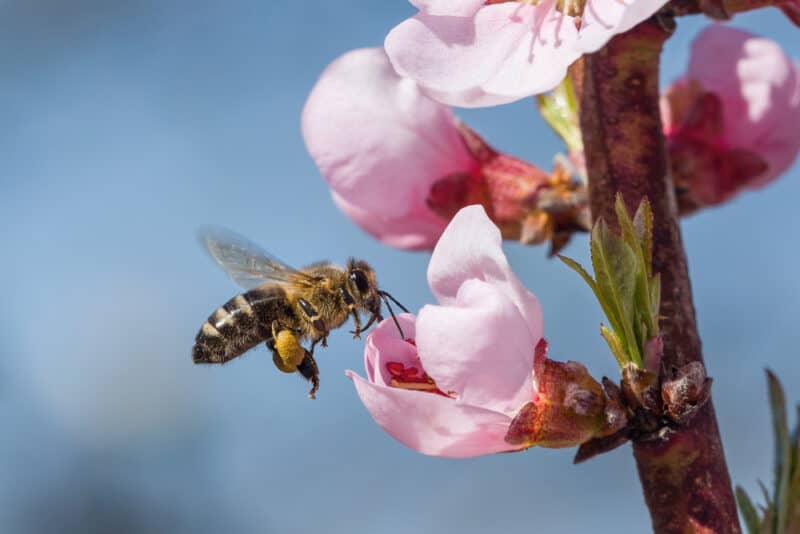
If your trees aren’t pollinated well in the spring, the tree won’t produce a big, full harvest. That’s why you want to do whatever you can to encourage pollinators, including planting lots of bee-friendly plants.


